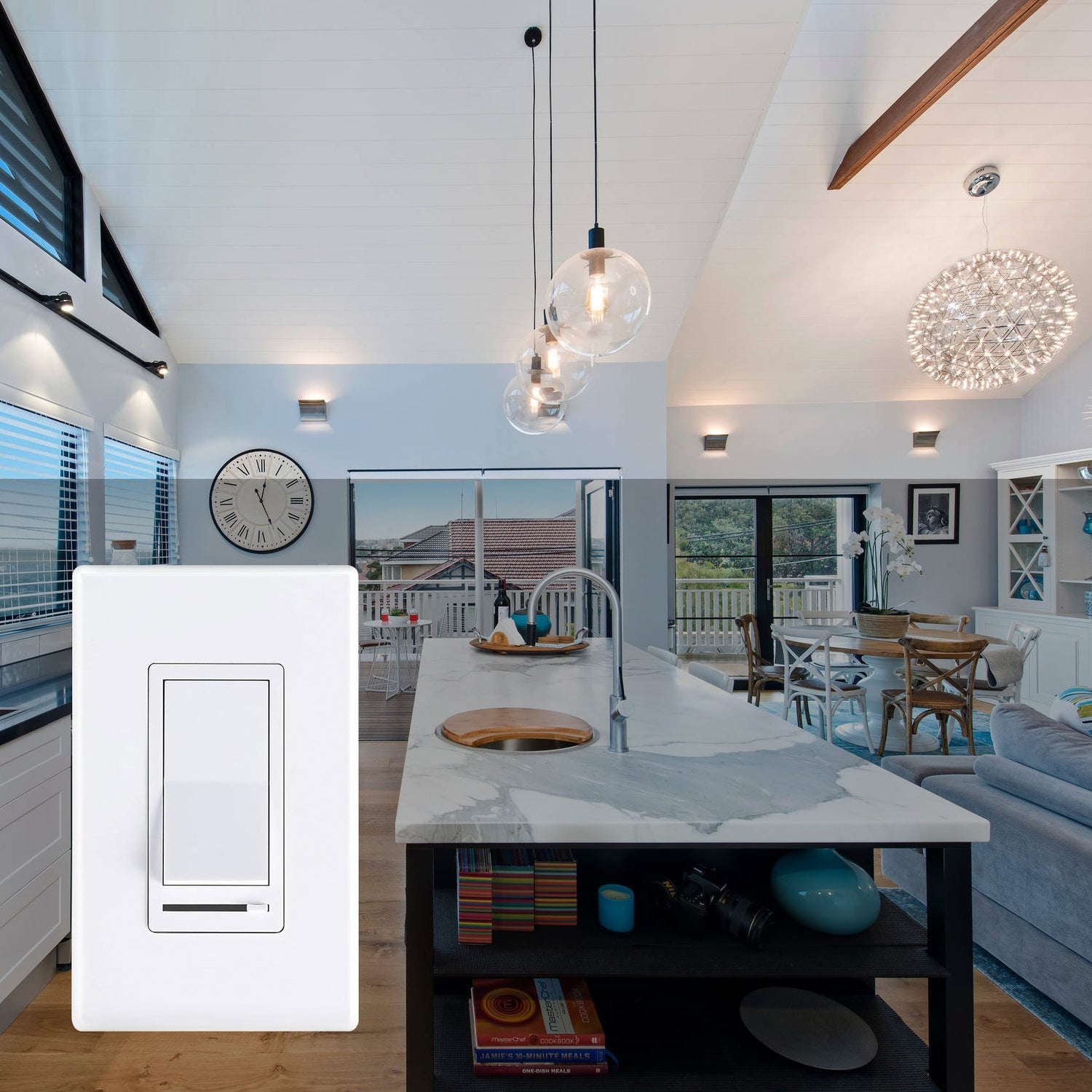In the world of lighting control, two popular methods for dimming lights are TRIAC dimming and 0-10V dimming. These techniques are widely used in both residential and commercial settings to achieve energy savings, create ambiance, and extend the lifespan of lighting fixtures. The important component of LED dimming is it’s dimmable driver. Check out compatible 12V dimmable and 24V dimmable drivers for your low voltage LED lighting application. Here we will delve into the details of TRIAC dimming and 0-10V dimming, exploring their mechanisms, applications, and benefits.
TRIAC Dimming
TRIAC dimming is a form of phase-cut dimming commonly employed to regulate the brightness of incandescent, halogen, and certain types of LED lighting. The term “TRIAC” refers to the type of electronic component used in the dimmer switch, which controls the power delivered to the light source. TRIAC dimmers work with leading-edge or trailing-edge dimmable drivers or ballasts, allowing them to cut the voltage waveform’s phase angle.
How TRIAC Dimming Works
In a TRIAC dimming system, the AC voltage waveform is modulated to reduce the amount of power delivered to the light source. By changing the phase angle at which the voltage is applied, the light output can be dimmed smoothly. As the phase angle is reduced, the light receives less power, resulting in a dimmer illumination. Conversely, increasing the phase angle brightens the light.

Applications of TRIAC Dimming
TRIAC dimming is commonly found in residential settings, where it is compatible with existing incandescent and halogen bulbs. However, it’s essential to note that not all LED fixtures are compatible with TRIAC dimming, as some LEDs require specific dimmable drivers designed for this purpose. In commercial applications, TRIAC dimming is sometimes used for specific lighting setups, but it may not be the most efficient choice for modern LED lighting systems.
Advantages of TRIAC Dimming
Cost-effective: TRIAC dimming technology is relatively affordable, making it a popular choice for residential applications and retrofits.
Simplicity: TRIAC dimming systems are straightforward to install and operate, requiring no specialized wiring.
Wide Availability: TRIAC dimmers are widely available and come in various designs and styles to suit different needs.
0-10V Dimming
0-10V dimming is an analog dimming technique used primarily to control the brightness of certain LED drivers, fluorescent ballasts, and other compatible lighting fixtures. In this system, the dimmer sends a direct current (DC) voltage signal to the lighting fixture, with 0V representing 0% brightness (off) and 10V indicating 100% brightness (full intensity). Any voltage level between 0V and 10V sets the light output at various dimming levels.
How 0-10V Dimming Works
In 0-10V dimming, the dimmer generates a control voltage between 0V and 10V, depending on the desired brightness level. The lighting fixture interprets this voltage to adjust its light output accordingly. A 10V signal corresponds to maximum brightness, while lower voltages lead to dimmer illumination.

Applications of 0-10V Dimming
0-10V dimming is widely used in commercial and industrial settings, especially with LED fixtures equipped with dimmable drivers. It is a popular choice for offices, retail spaces, and other environments where precise and smooth dimming control is required.
Advantages of 0-10V Dimming
Smooth Dimming: 0-10V dimming provides seamless and flicker-free dimming across the full range of light output.
Flexibility: This method is compatible with various lighting fixtures and LED drivers designed for 0-10V dimming.
Scalability: The 0-10V control signal can be used to manage multiple fixtures simultaneously, offering scalability for larger installations.
Both TRIAC dimming and 0-10V dimming are popular methods for controlling the brightness of lighting fixtures. While TRIAC dimming is often associated with residential settings and older lighting technologies, 0-10V dimming is more commonly used in commercial and modern LED lighting applications. Understanding the differences and advantages of each method is crucial in choosing the right dimming solution for your specific lighting needs, whether for energy efficiency, ambiance, or creating the perfect lighting environment.



